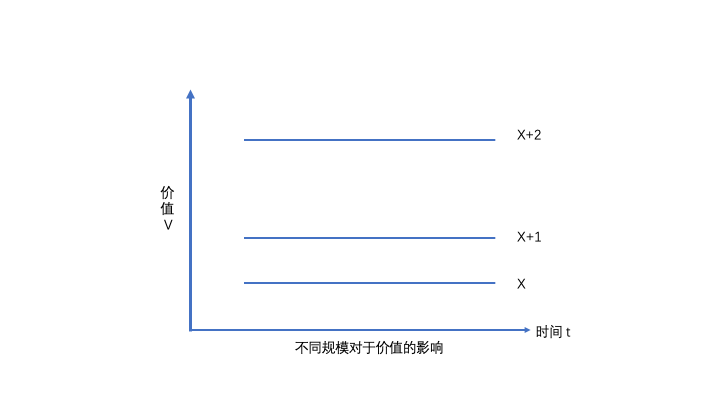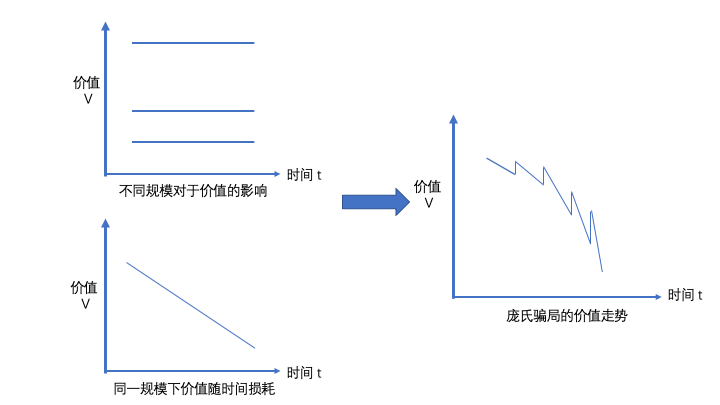Ponzi Research Series: Analysis of Ponzi scheme from the model of Bell Chain

In the first two articles, we analyzed some Ponzi cases in history and pointed out how the model currency works. At the same time, we also mathematically derived the Ponzi model to infer the key factors affecting its life cycle. .

The second is the ability to reduce the outflow of funds. Minimize the frequency and amount of funds that investors withdraw.
- Say good and dollar 1:1 anchor? This stable currency is priced at $34 in a short period of time.
- Good intentions for Bitcoin to celebrate, BitMEX is therefore a pot
- Preconceived? Tencent, Huawei and other big companies bet 5G and blockchain at the same time
We will find that in fact these two aspects of capabilities are not just Ponzi schemes, any company, even the economy, these are very important. As an economy, the Ponzi scheme is the same as the traditional company – it survives as long as possible, but Ponzi uses a means of drinking and quenching thirst.
In this article, we will further analyze how Ponzi schemes achieve the two goals of open source and throttling. At the same time, by sorting out the realization process, we hope to find some positive ways to really promote the development of the organization or economy, and better implement the open source and throttling to expand the life cycle of the economy.
I. Open source: traditional wins VS MLM wins

Promotion and dissemination is a problem that any product needs to face in the sales process, and it is also a problem that every enterprise must consider in sales.
Value of promotion and dissemination
This answer is yes. Value will increase because of promotion.
We can analyze physical products, Internet products, and financial products one by one, and come to this conclusion:

Changes in the value of Internet products can be explained by Metcalfe's Law. Chat software, video sites and other products that need to be connected through the network, the more people use the product, the greater the value of the product itself. Everyone who uses it will increase the value of the product itself.
Many financial products also have network effects. When you need a lending service, you tend to choose a lending platform that has more people to use, so that you can get more funding needs. The reason why people choose exchanges is the same. Everyone always expects to choose a more liquid exchange, so that they can quickly meet the trading needs. Better liquidity means more people are trading on this platform, and the value of the platform is getting bigger and bigger.
If we can enhance the value, why did they end up in the end, and eventually they will fall? Because of a factor that is less considered, as we described in the previous article, "Brain Hole: Resolving the Future Significance of the Trinity "Super Carrier" of Commodities, Securities, and Money from BNB, the value will be consumed over time. These audiences will not join if they are not satisfied at least at some point in the product.
The price of the Ponzi scheme's expansion in an aggressive manner is that the value gain it brings is far from enough to compensate for the increase in its future value loss rate, so the collapse is an inevitable outcome.
We can simply simulate from these two dimensions, the value gain brought by the scale expansion is usually expressed in the form of Metcalfe's law.



Therefore, the Ponzi scheme must obtain more enhancements in each scale increase to cover the expansion of the value loss rate, but for the two factors that affect value, the scale always has ceilings, and time can continue for a long time. Therefore, it must end in a collapse.
Promotion model in the field of blockchain
In contrast to the model currency, or other Ponzi projects, there is no description of the development process. The actual progress of the business shows that all propaganda is centered on how to directly provide participants with more lucrative profits.
The other may be more common. Some projects are not Ponzi schemes, but also have actual business and development. However, the effect achieved during the promotion is several times that of their actual business progress. In this way, attracting attention from new funds is also overdraft. The value of the project.
Second, throttling: the retention mode of both soft and hard
From the beginning of complete freedom, to providing some incentives (old user discounts), some penalties (early withdrawal of time deposits will lose all interest income), and then partially forced (some funds redemption has a longer lock-up period). These endless means are all for the core, that is, the user keeps.
For the traditional economy, the user keeps doing badly. The economy is like drinking a chronic poison, and it goes to death with a little decline in performance. For the Ponzi scheme, the user (funds) is basically the lifeline. A large amount of capital runs, users quickly lost, Ponzi projects will collapse.
From this, we will find that some Ponzi projects with a long life cycle pay considerable attention to the retention of funds, adopting a very refined management model, in simple terms, both hard and soft, to maximize the lock on funds. We can combine the BRC case to look at it:
Bell chain super rich game 

At this time, it is necessary to combine some soft measures. If the hard measure is to control people's behavior, the soft measure is to reduce people's willingness to act. To a certain extent, it can be understood as an expected management problem.

For this part of the population, the potential brainwashing of the expected management method is not effective, and can only change their expectations through the price performance level in the secondary market.
Professional players will try to capture the signal before the crash based on the situation of the disk, and the project side will use the signal in reverse to break the expectations of this part of the player.
However, because the overall secondary market project party has stronger control, the price game is easy to create a battlefield for you to kill.
The traditional behavior of sitting on a plate can also be summed up – by controlling the price changes to influence the expectations of the participants, so that the expectations of the participants fall into an ideal category, paving the way for the behavior after the trader.
For the Ponzi scheme, he usually knows his participants better and can better regulate their expectations. So it will lead to the conclusion that in the secondary market, what wins you is not your understanding of the market game, but your understanding of the opponent. We will discuss further the expected management in the follow-up content, so stay tuned.
Third, summary

The success of any project is inseparable from the successful promotion, but it is necessary to control the proportional relationship between the value increase and the value loss brought by the promotion, so that the long-term deviation from the balance will be counterproductive.
In addition, there is a need to focus on the rigid constraints on the behavior of all participants and the expected management of the will of the participants.
This is the meaning of the design of the general economic.
More [Pon's Research] Collection
Pon's Research Series: Analysis and Prevention Guide for Model Currency Principles
——END——
We will continue to update Blocking; if you have any questions or suggestions, please contact us!
Was this article helpful?
93 out of 132 found this helpful
Related articles
- Bitcoin's risk-averse ability is unquestionable, but it is still young. Analysts say Bitcoin is the standard for all currencies.
- The savior of Ethereum? Enterprise Ethereum Alliance (EEA) main network plan is ready to go
- Suddenly abandoned by two big banks, Coinbase was "accepted" in the UK
- Solidity programming language: hex string, enum enum
- The king of the public chain was surrounded by the chain, can the Ethereum return to the king?
- "Reverse refers to the king" Goldman Sachs milk was once again fulfilled, counting those "goos"
- Twitter Featured | Gold vs Bitcoin big debate, betting on the best assets in the next 10 years





